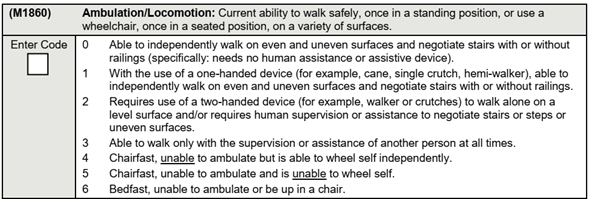
The home health star ratings summarize key performance measures in an easy-to-understand format, improving the ability of consumers to compare and choose top-performing home healthcare providers, in addition to other detailed information.
Since home health organizations that are rated four or five stars are typically sought out as potential partners, improving scores is vital for long-term home health success.
Identifying the Star Ratings
There are two kinds of home health star ratings:
- Patient Survey Star Ratings – Based on Home Health Consumer Assessment of Healthcare Providers and Systems (HHCAHPS) composite data.
- Quality of Patient Care Star Ratings – Based on Outcome and Assessment Information Set (OASIS) data and claim measures:
- Timely Initiation of Care (process measure)
- Improvement in Ambulation (outcome measure)
- Improvement in Bed Transferring (outcome measure)
- Improvement in Bathing (outcome measure)
- Improvement in Shortness of Breath (outcome measure)
- Improvement in Management of Oral Medications (outcome measure)
- Acute Care Hospitalization (claims-based) (outcome measure)
In order to increase both home health star ratings, organizations must improve Home Health CAHPS results and the accuracy of OASIS documentation.
How to Improve Home Health OASIS Accuracy
Improving the Quality of Patient Care ratings starts with accurately scoring the initial Start of Care (SOC) or Resumption of Care (ROC), based on patient deficits, and ending with improvement in patient transfer and discharge.
Organizations should also train clinicians on accurately documenting the patient’s status in the OASIS, especially focusing on reviewing the intent of each measure, the appropriate responses and understanding what to look for during the assessment.
The following is an example of OASIS M1860, which assesses the patient’s ability to ambulate.
M1860 Ambulation/Locomotion – Measures the ability of the patient to walk safely, once in a standing position, or use a wheelchair, once seated, on a variety of surfaces.

- Intent – Measure the patient’s ability, and not necessarily their performance of the activity. The responses address the patient’s ability to safely ambulate or use a wheelchair, given their current physical, mental, emotional and cognitive status, activities permitted and the environment. A wholistic perspective should be used by the clinician when assessing the patient’s ability to perform activities of daily living (ADLs).
- Response-Specific Instructions – Review each answer option carefully to determine which response best describes the patient’s ability at the time of the assessment.
Reviewing the above information during clinician training or supporting the OASIS certification of clinicians will improve their understanding and documentation of the various OASIS items and ultimately the quality measures and star ratings.
Quick Tips to Improve OASIS Documentation:
- OASIS scrubbing tools should ideally be used by clinicians and quality assurance staff for true real-time validation and correction as close to documentation as possible.
- Implementing a quality assurance review with clinician feedback is essential to improve the quality of OASIS documentation.
- Foster collaboration between clinicians, such as nurses and therapists, while completing OASIS assessments.
- Engage in Quality Assurance Performance Improvement (QAPI) efforts to identify areas of weakness, necessary to implement an improvement plan for both OASIS accuracy and patient improvement.
- An example would be increased involvement of occupational therapy for energy conservation with chronic obstructive pulmonary disease (COPD) patients with dyspnea.
Improvement in the patient’s ambulation status and other measures between admission and discharge are all reported on the CMS Care Compare website and go into calculating an organization’s star rating.
The importance of Care Compare measures and star ratings will continue to grow as the drive for value-based care continues both in public and private sectors of healthcare. Care Compare measures and star ratings are vital to the long-term success of home health organizations.
Axxess Home Health, a cloud-based home healthcare software available on any mobile device, includes OASIS documentation driven by compliance for the highest reimbursement.
